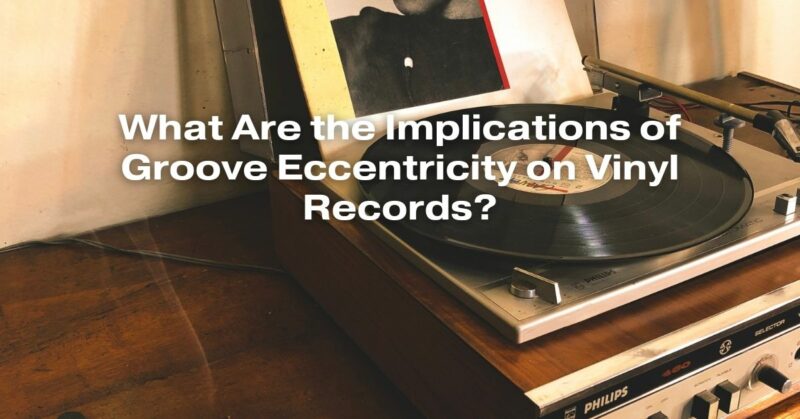Vinyl records have enjoyed a resurgence in recent years, captivating audiophiles and music enthusiasts alike with their warm, authentic sound. However, the world of vinyl is not without its intricacies. One such factor that significantly influences the listening experience is groove eccentricity. This phenomenon, often overlooked by casual listeners, plays a pivotal role in shaping the way we perceive music on vinyl. In this comprehensive article, we will delve deep into the implications of groove eccentricity on vinyl records, exploring its technical aspects and the impact it has on sound quality and overall musical enjoyment.
Understanding Groove Eccentricity
Groove eccentricity refers to the deviation from the ideal circular path that a stylus (needle) traces within the record groove. Ideally, the groove should be perfectly concentric with the center hole of the record. However, manufacturing imperfections, wear and tear, or even mishandling can lead to eccentric grooves.
The Technicalities Behind Groove Eccentricity
Vinyl records store audio information in the form of analog signals engraved on the surface of the disc. When the stylus moves along the groove, it translates these physical undulations into electrical signals, which are then amplified and played through speakers. Groove eccentricity disrupts this process. As the stylus encounters variations in the groove’s shape, it can result in fluctuations in the signal’s amplitude and frequency, distorting the audio output.
Impact on Sound Quality
The consequences of groove eccentricity on sound quality are profound. The most immediate effect is audible distortion. As the stylus encounters eccentric portions of the groove, it may cause the tonearm to move erratically, leading to fluctuations in volume and clarity. This distortion can manifest as pops, clicks, or even skipping, disrupting the seamless flow of music. Moreover, the stylus might not maintain consistent contact with the groove, leading to loss of fidelity and overall sound degradation.
Listening Experience and Musical Enjoyment
For audiophiles and dedicated vinyl enthusiasts, groove eccentricity is a critical concern. It can significantly diminish the listening experience, especially when playing high-fidelity recordings or delicate musical passages. The distortion caused by eccentric grooves can obscure subtle details, alter the timbre of instruments, and degrade the spatial imaging, robbing the listener of the immersive experience that vinyl records are renowned for.
Prevention and Mitigation
Manufacturers employ rigorous quality control measures to minimize groove eccentricity during the production of vinyl records. Additionally, proper handling, storage, and maintenance of records and turntable components can help mitigate the effects of eccentric grooves. Regular cleaning of records and ensuring the stylus is in optimal condition can reduce wear and tear, minimizing the likelihood of groove eccentricity-related issues.
Conclusion
In the realm of vinyl records, groove eccentricity stands as a formidable adversary to pristine sound quality. Understanding its implications is crucial for both enthusiasts and casual listeners, as it sheds light on the nuances that can impact the sonic purity of analog music. As the vinyl resurgence continues, manufacturers and listeners alike must remain vigilant, employing best practices to preserve the integrity of this beloved audio format. By appreciating the technicalities of groove eccentricity, we can ensure that the warm, authentic charm of vinyl records continues to captivate generations of music lovers for years to come.

